WeChat is a multi-purpose app released by Tencent in 2011. As a messaging app, social media platform, and mobile payment solution, WeChat quickly became a must-have application in mainland China. Boasting more than 1.3 billion monthly active users (MAUs), it is used for a wide range of applications from paying bills to ordering food, shopping or just checking friends’ social media posts. According to Hootsuite, Chinese people spend on average one third of their online time on WeChat. More than 81% of users spend over one hour per day on the app. WeChat ranks fifth as the most checked app in the world behind Facebook, YouTube, WhatsApp, and Instagram.
Naturally, the sheer number of users and available data already makes WeChat marketing unavoidable for doing business in China, but it is not the only reason. Chinese consumers, especially the younger generations, have fully integrated digital technologies in their spending habits. Because of these new consumer trends and the dominance of WeChat online, the app is now one of the primary ways for domestic and foreign businesses to build a consumer base.
How does WeChat marketing work and how do brands successfully advertise on WeChat? Let’s find out.
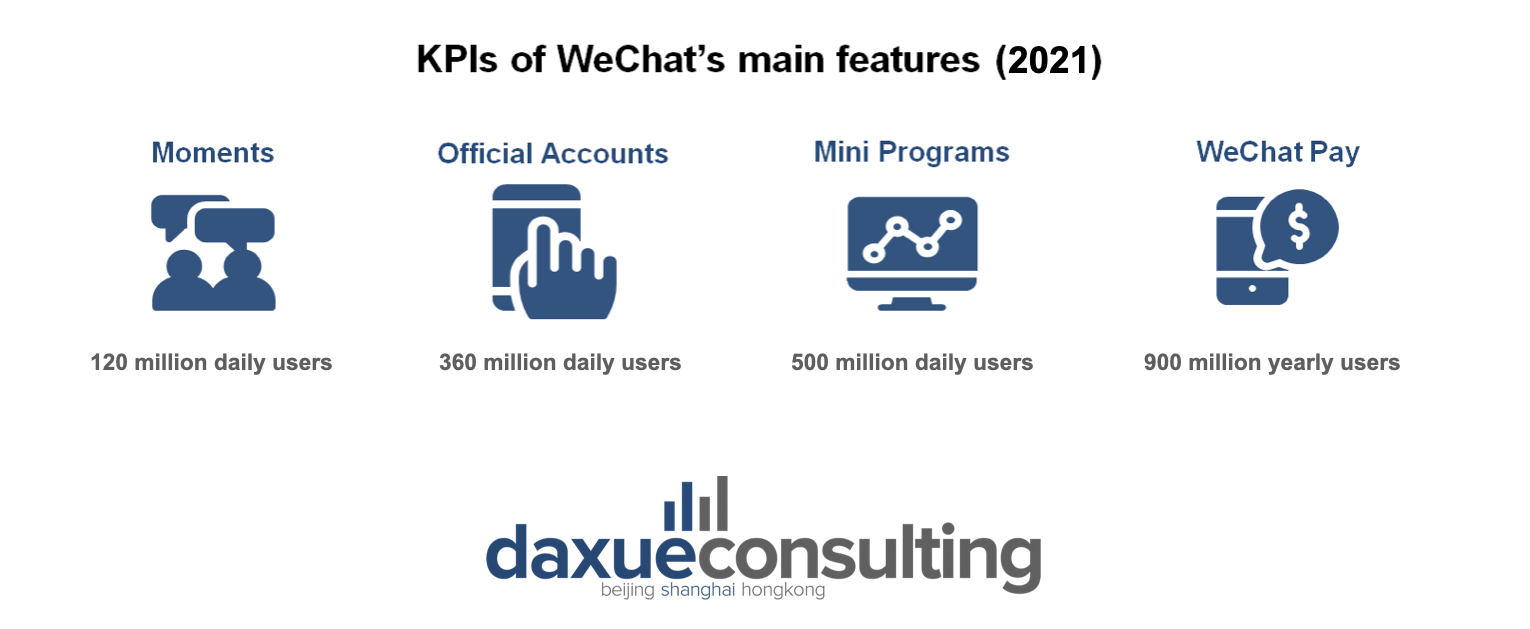
Step one to WeChat marketing: Setting up a WeChat business account, but what type of account suits your business best?
WeChat offers two kinds of official accounts for businesses advertising: Subscription accounts and Services accounts.
WeChat subscription accounts
Subscription accounts are specialized in information and brand communication. They can publish once a day and up to eight articles at a time. Publications appear in users’ subscription folders with no notifications. This type of WeChat official account is most suited for content-based businesses such as news organizations, associations, and small companies wishing to advertise their brand in China. Although Subscription accounts can post more articles, the absence of notifications makes them less noticeable. Subscription accounts are the only type of WeChat official account that can be set up by individuals and are the easiest to create for companies.
WeChat service accounts
WeChat Service accounts offer a wide range of features including customer service, data collection, and CRMs. Once verified, Service accounts can set up a store through WeChat Pay, customer service and geo-localization. Service accounts can publish up to four times per month and up to eight articles at a time. This is far fewer publications than allowed to a Subscription account. However, users will be notified with a push notification in their chat list, which considerably increases publication visibility. Service accounts are more suited for bigger businesses that are using their official WeChat accounts as both websites and stores thanks to the integrated e-commerce and data collection features.
WeChat advertising: How to use WeChat’s features to advertise your brand
WeChat Moments: Creating engaging content for your followers
Moments are an essential component of the social media function of WeChat. They work similarly to Facebook timeline posts, allowing users to post text-based content as well as upload up to 9 images per post and share articles and videos. The “Top stories” feature showcases a personalized selection of articles based on users’ preferences. Since 2015, WeChat offers businesses to post “Moments Ads”, which appear at the fifth position in users’ Moments feed as a sponsored Moment. If users click on that sponsored Moment, they will be redirected to the business’ landing page. Landing pages’ content varies greatly depending on the type of business but can include pictures, videos, multiple choice cards and adaptive content.
The main purpose of WeChat Moments Ads is promotion, whether it be for a brand, a specific product or a sales location, the brand’s official account or coupon distribution. Richer content pieces like articles and podcasts are usually published on the brand’s official account. Because WeChat limits the number of ads displayed to their users to two per day, Moments Ads have a lower impression rate than other forms of advertisement on other social media. However, since ads are less intrusive and more targeted, ads on WeChat tend to have a much higher engagement rate as users often like, comment and share ads to their own friend circle.
Moments are also a key point in WeChat marketing for organic traffic. While companies cannot post directly on moments, it is one place where readers will share articles, links and images to their closed circle of contacts.
Wechat Banner and KOL ads:
The other two main types of advertisement available on WeChat are Banner ads and KOL ads. Banner ads appear at the bottom of a company’s posts and redirect users to other WeChat accounts, stores or external links. The main advantage of these is that they are directly shown to users that already have an interest in the company, and they are also cheaper than WeChat Moments ads. Tencent has recently been focusing on improving this method.
A linked method is advertising through KOLs – Key Opinion Leaders. That means bidding to be placed under a popular account’s post. With the help of WeChat’s algorithm, the ad should reach the specific targeted audience. However, this option has disadvantages: it is more expensive and shows to be less effective than similar ads on other platforms. For example, Weibo can directly link e-commerce websites and make the procedure of following the ad easier.
WeChat Mini Programs: Going beyond WeChat capabilities
WeChat Mini Programs are third party add-ons for WeChat. Like “sub-apps” working within WeChat, they are programs that truly give WeChat its multi-function aspect. Ranging from booking tickets to video sharing and gaming, the features’ scope of WeChat Mini Programs is extensive. For businesses, Mini Programs can be used as a way to build customer engagement by powering an advertisement campaign. Between gift-sharing events, exclusive membership clubs, mini-games, Mini Programs potential is almost limitless.
E-commerce is another way for businesses to make the most of WeChat Mini Programs. Unlike broader e-commerce platforms, Mini Programs allow brands to control item positions, ad positions and the overall design, granting them great independence.
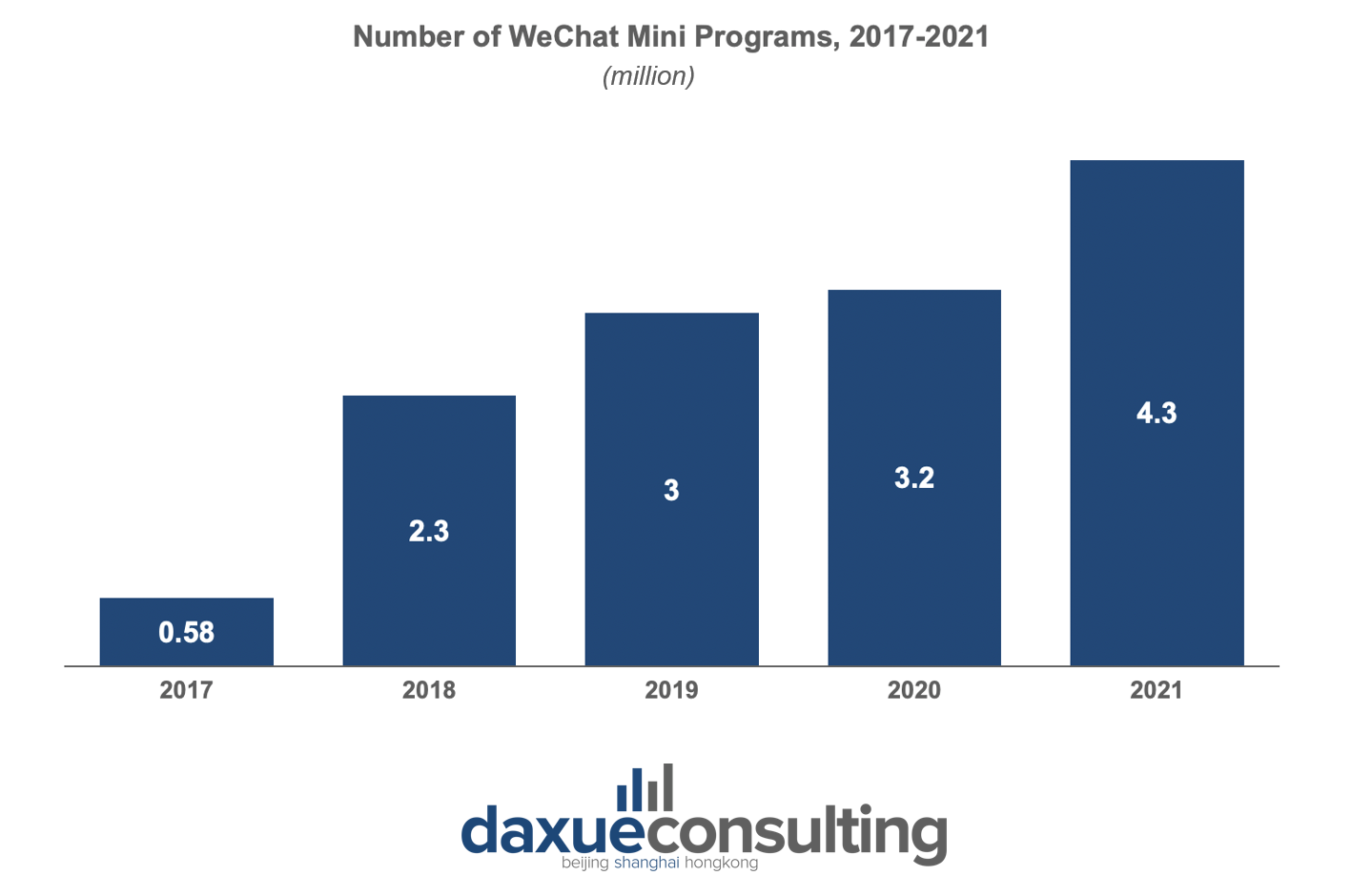
Another important point to be noted is the difference between WeChat Mini Programs and its H5 campaigns. H5 are similar to the first in resembling web pages that open up within WeChat. However, they are much cheaper and faster to create, because their creation process is easier, and their verification is much simpler. They have more limited functions: for example, they can’t offer a one-stop purchase. Nevertheless, companies should keep them in mind if an effective marketing tool is needed in a shorter time: due to the ease of development, they are useful for advertising products pre-sale.
WeChat Channels and Livestreaming: The future of WeChat marketing
WeChat Channels is a short video feature launched by WeChat in 2020 similar to China’s TikTok – Douyin. It features four feeds based respectively on user’s followed accounts, content loved by contacts, trending content and geo-localized content based on user’s location. Official accounts have unrestricted access to the Channels feature, making it a great advertising tool for creating engaging content. Just like WeChat Moments advertising, Channels content have a great engagement rate which makes it an ideal tool for viral marketing.
Recently, Tencent has been working on turning Channels into a more effective advertising instrument: due to very high engagement, it showed to boast a great monetization power. Now Channels present video ads and provide access to online stores directly, making this instrument very attractive for businesses: users watching videos can be shown ads and easily be redirected to advertised products.
Since March 2019, WeChat also allows official accounts to create live streaming channels. While it is still mostly associated with gaming in the West, live streaming in China has rapidly become a powerful marketing tool. There are two main types of live streaming marketing content on WeChat: regular content and event-based content. Regular content is streamed on a regular basis and is used to create user engagement. This kind of content features item demonstrations and try-ons, tutorials, and interviews. It also can rely on the influencing powers of KOLs and brand ambassadors to generate more engagement around your brand and products. Event-based content is centered on specific marketing campaigns. This kind of campaign focuses more on sales and advertising, offering coupons and sneak peeks at new products.
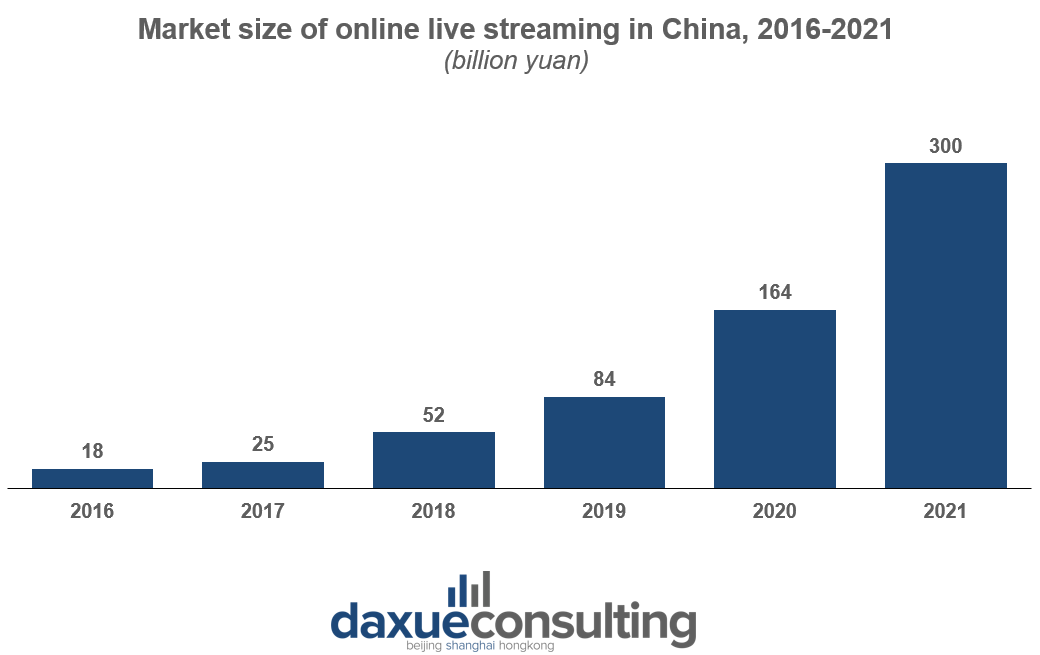
WeChat Pay: The necessary payment method for Chinese businesses
WeChat Pay is a secured mobile payment solution developed by WeChat. Alongside Alibaba’s Alipay, it is the most used payment solution in China. Much more than just an online payment method, WeChat pay is used everywhere in the daily life of Chinese consumers to the point that most brick-and-mortar retailers are using it. In the span of just a few years, China went from a cash-based economy to a phone-based one, skipping the use of credit cards. For the sake of convenience, a lot of Chinese consumers expect to be able to use WeChat Pay as a payment method, making this tool pretty much mandatory for doing e-commerce in China (mobile payments represented more than 80% of daily consumption in 2021). WeChat Pay also offers discount vouchers and coupons which can be used in a WeChat advertising campaign.
WeChat advertising guidelines
Firms should be aware that WeChat restricts foreign companies’ access to advertisement on the platform: it is useful to know which rules for placing ads exist and which information a company needs to provide WeChat. For example, wholly foreign-owned companies can only use banner ads after proving their registration in China and demonstrating required licenses. Detailed explanations for specific industries can be found on WeChat’s official website.
Using WeChat Marketing tools to refine your marketing strategy
WeChat Customer Relationship Management tools (CRMs): boosting your customer outreach
WeChat Service accounts already offer a wide range of marketing features, but for businesses that want to set up a powerful marketing funnel, WeChat CRMs are the next logical step. Although telemarketing is still used in some cases, like in the insurance industry for example, WeChat is now the main hub for customer marketing management in China. There are a lot of different WeChat CRMs to choose from, all offering similar features like their Western counterparts like Hubspot or Salesforce. Loyalty programs, customer services, data collection, WeChat advertising campaign management… WeChat CRMs give you additional tools to market your brand and to make better segmentation. Again, WeChat already offers a wide range of marketing features, so WeChat CRMs are more adapted to companies seeking to penetrate competitive markets or that sell products with very specific segmentation needs.
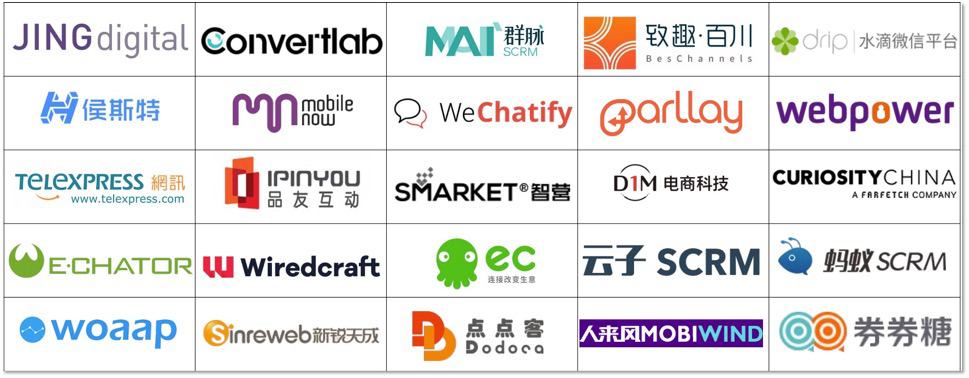
WeChat Index: A handy tool available to all
WeChat Index is a basic tool that can monitor the popularity of designated keywords in WeChat similarly to Google Trends. It gives access to 90 days’ worth of data, allowing any WeChat user to measure a keyword’s popularity. To access the Index, simply search “微信指数” in the WeChat search bar and look up for the desired keyword. This basic marketing tool can be used to measure brand popularity and the effectiveness of WeChat advertising campaigns. It can also contribute to content production by highlighting current and past WeChat trends and benchmark competition’s popularity. Because the capabilities of WeChat Index are limited, brands wishing to go on an in-depth analysis of WeChat trends and brand activities will have to use a dedicated social media listening tool.
WeChat Social Media Listening tools: Go further on data analysis
Social Media Listening (SML) is the process of monitoring social media for specific KPIs about a given brand or product. This allows companies to monitor their activity and the activity of their competitors and plan their advertisement campaigns accordingly. The data SML tools can extract can allow brands to improve and develop their WeChat marketing strategies. For example, by identifying recurring positive and negative keywords, a brand can tweak a product or a PR campaign to address the issues or play on its strengths. They can also give detailed data on specific accounts, posts, and Mini Programs. Just like for WeChat CRMs, there are a myriad of SML tools to choose from and each caters to different needs.
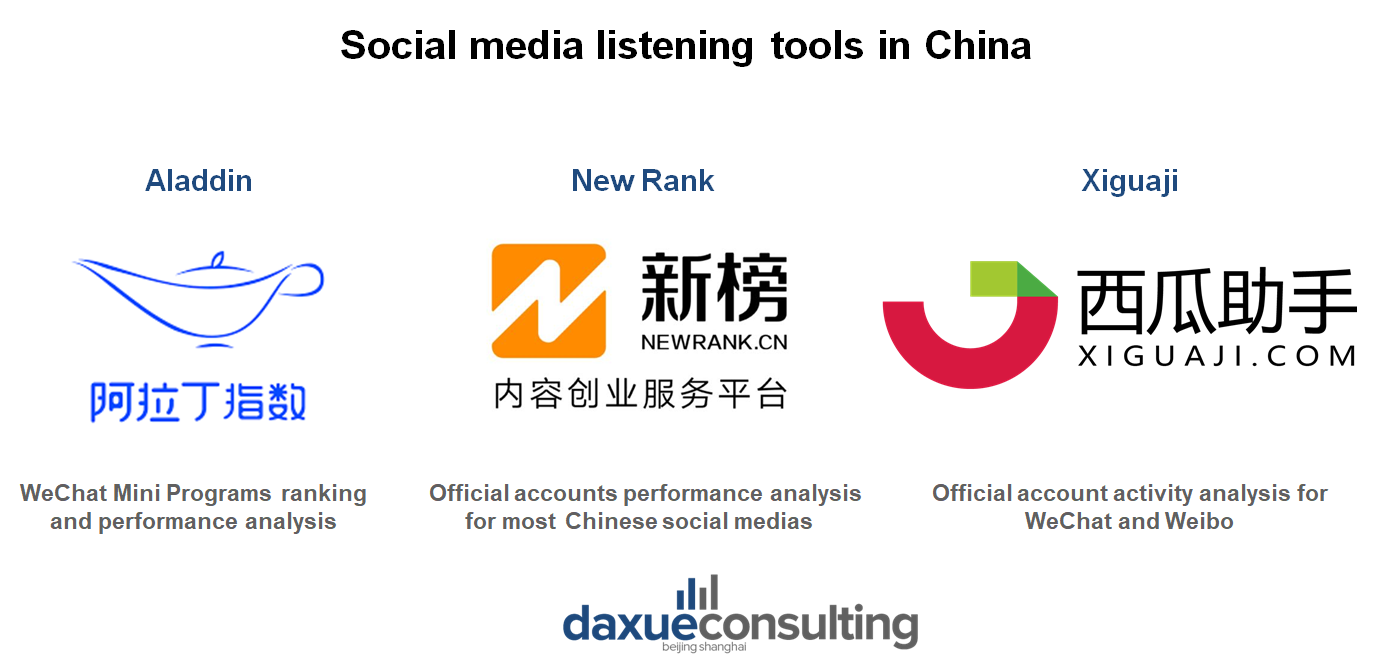
Depending on their needs, brands can choose different SML tools to support their marketing strategy on Tencent subsidiary
What opportunities WeChat marketing offers
- The importance of WeChat marketing cannot be stressed enough for businesses in China. With its massive user base and high engagement rate, WeChat cannot be avoided for companies wishing to advertise in China.
- Subscription official accounts are more suited for smaller or content-based businesses while Service accounts are made for companies eager to use the full potential of what WeChat has to offer for marketing.
- WeChat Moments advertisement is the most popular form of WeChat advertising. Unlike their Western equivalents, social media advertisements on WeChat have a high engagement rate.
- Video and livestreaming marketing are booming in the heavily digitalized Chinese economy. Livestreaming in particular has grown over the last few years, opening new opportunities for WeChat advertising.
Author: Camille Gaujacq
Update: Sofia Tishchenko





